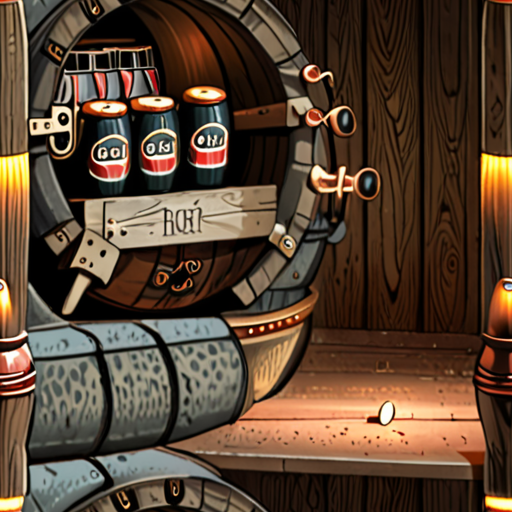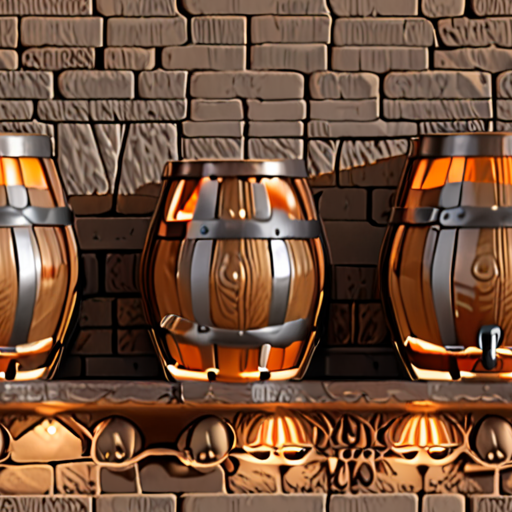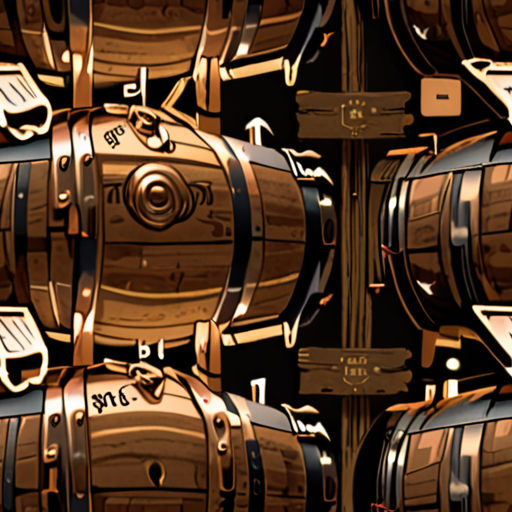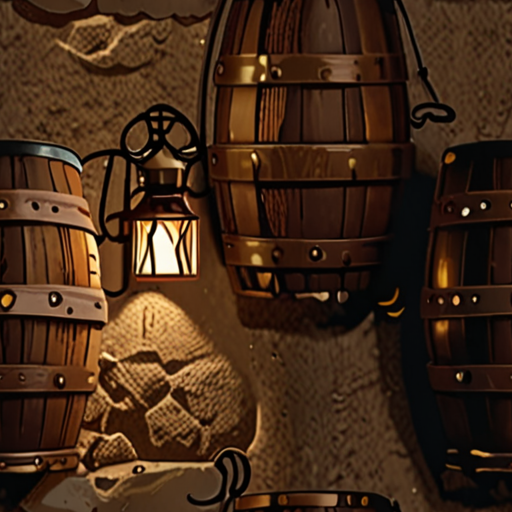When it comes to preserving the flavor and quality of your favorite beers, proper storage is crucial. Whether you’re a seasoned brewer or a casual beer enthusiast, investing in the right beer storage units can make all the difference in ensuring your beers stay fresh for longer. From glass versus plastic bottles to keg storage options and ideal storage conditions, there are numerous factors to consider when choosing the perfect storage solution for your beer collection.

Best Storage for Beer
The ideal storage conditions for beer involve maintaining a consistent temperature between 40°F and 55°F (4°C and 13°C), away from direct sunlight and heat sources.
- Bottled beer can last for several months when stored properly, with a typical shelf life ranging from 6 to 12 months.
- It’s essential to store bottles upright to prevent sediment from settling at the bottom.
- Avoid storing beer near strong-smelling foods, as odors can transfer to the beer.
- Keep beer away from direct sunlight, which can cause flavors and aromas to degrade.
Some popular options for storing beer include:
- Beer fridges : These specialized refrigerators are designed specifically for storing beer and can maintain precise temperatures.
- Coolers : Insulated coolers can be used to store beer, but they may not maintain a consistent temperature.
- Cellars : A well-insulated cellar can provide optimal storage conditions for beer, but it requires careful temperature control.
When choosing a storage method, consider factors such as space constraints, budget, and personal preference.
Storage Tips
- Store beer in a dark place to prevent light damage.
- Maintain a consistent temperature to slow down aging processes.
- Keep beer away from vibrations and movements.
- Monitor beer levels regularly to prevent oxidation.
Beer Storage Best Practices
By following these guidelines, you can ensure that your beer remains fresh and flavorful for an extended period.
How Long Does Beer Last in a Keg?
The shelf life of beer in a keg depends on several factors, including the type of beer, storage conditions, and handling procedures.
- Factors Affecting Shelf Life
- Type of Beer: Different types of beer have varying levels of carbonation, which affects their shelf life. For example, lagers tend to last longer than ales due to their lower carbonation levels.
- Storage Conditions: Temperature, humidity, and light exposure can impact the shelf life of beer in a keg. Ideal storage conditions typically range between 35°F and 45°F (2°C and 7°C), with low humidity and minimal light exposure.
- Handling Procedures: Proper handling and maintenance of the keg, including regular cleaning and sanitizing, can extend its shelf life.
- Average Shelf Life of Beer in a Keg
- Typically, beer in a keg lasts anywhere from 30 to 120 days, depending on the factors mentioned above.
- Lagers generally last longer than ales, with an average shelf life of 60 to 90 days compared to 30 to 60 days for ales.
- Signs of Spoilage
- Off-flavors or odors
- Cloudiness or sedimentation
- Carbonation loss or excessive foam
- Maintaining Freshness
- Regularly clean and sanitize the keg
- Monitor temperature and humidity levels
- Minimize light exposure
- Consume beer within the recommended shelf life
By understanding these factors and taking steps to maintain freshness, you can enjoy your favorite beers for a longer period.

Storage Conditions for Beer
When it comes to storing beer, there are several factors to consider to ensure that your brew remains fresh and flavorful.
- Cool Temperature: Store your beer in a cool, dark place, away from direct sunlight or fluorescent lighting to prevent the dreaded skunky taste.
- Optimal Temperature Range: Each beer style has its preferred temperature range. Generally, keeping your beer between 45°F and 60°F (7°C to 16°C) ensures it ages gracefully.
- Humidity Control: Maintain a consistent humidity level between 50% and 70% to prevent moisture buildup and spoilage.
- Avoid Light Exposure: Direct light can cause beer to degrade quickly, leading to off-flavors and aromas.
- Minimize Movement: Avoid moving your beer frequently, as this can cause sediment to become disturbed and affect the flavor.
- Keep it Clean: Regularly clean your storage area to prevent contamination and keep your beer fresh.
By following these guidelines, you can ensure that your beer is stored properly and remains enjoyable for months to come.
Beer Storage Tips
- Use a Beer Fridge: Consider investing in a beer fridge specifically designed for storing beer, which maintains a consistent temperature and humidity level.
- Choose the Right Container: Select containers that are specifically designed for storing beer, such as glass or stainless steel bottles or kegs.
- Monitor Temperature: Use a thermometer to monitor the temperature of your storage area and adjust as needed.
- Rotate Your Stock: Regularly rotate your beer stock to ensure that older beers are consumed before newer ones.
Additional Resources
For more information on beer storage and handling, check out our Beer Brewing Tips page or visit the Brewers Association website for industry insights and best practices.

Creating a Beer Cellar
To create a beer cellar in your home, consider the following steps:
- Choose a Location
- Invest in Shelving and Storage
- Control Humidity and Temperature
- Store Beer Properly
- Maintain a Clean Environment
- Consider Climate Control
- Add Lighting and Decor
- Monitor and Maintain Your Beer Collection
Select a cool, dark area with consistent temperatures between 45°F and 55°F (7°C and 13°C). A basement or a room with thick walls can work well.
Install shelving units specifically designed for storing beer bottles and cans. Consider using wine racks or wooden crates for added storage space.
Use a hygrometer to monitor humidity levels and maintain a stable temperature. Aim for a relative humidity of 50% to 70%.
Keep beer away from direct sunlight, heat sources, and vibrations. Store bottles and cans upright to prevent damage and contamination.
Clean the beer cellar regularly to prevent dust buildup and maintain a healthy environment for your beer collection.
If you live in an area with extreme temperatures or humidity fluctuations, consider investing in climate control systems to maintain optimal conditions.
Install dimmable lighting to showcase your beer collection and add decorative elements such as beer-themed artwork or vintage beer signs.
Regularly check the condition and age of your beers, and rotate your stock to ensure older beers are consumed before newer ones.
Cellaring Beer: A Guide to Optimizing Flavor
When it comes to cellaring beer, the ideal duration depends on several factors, including the style of beer, storage conditions, and personal preference.
-
Stout and Porter
These dark beers typically benefit from a year or two in the cellar, allowing the flavors to mature and integrate. However, it’s essential to monitor the beer’s condition and avoid pushing it beyond 2-3 years, as this may lead to staleness and a loss of flavor.
-
Barley Wine
This strong, complex ale can age for several years, with some examples benefiting from 5-10 years or more in the cellar. The aging process allows the flavors to mellow out, revealing subtle nuances and depth.
-
IPA and Pale Ale
For hop-forward beers like IPA and pale ale, the optimal cellaring time is generally shorter, ranging from 6 months to 2 years. This allows the hops to fade slightly, revealing the underlying malt flavors.
-
Sour and Wild Beers
Beers with wild yeast or bacteria, such as lambics and American wild ales, require careful handling and monitoring during the aging process. These beers can benefit from extended cellaring times, often 2-5 years or more, depending on the specific style and desired level of funkiness.
When cellaring beer, it’s crucial to store it in a cool, dark place with consistent temperatures between 45°F and 55°F (7°C and 13°C). Avoid exposing the beer to light, heat, or vibrations, which can cause off-flavors and spoilage.
Regularly check the beer’s condition by inspecting its appearance, aroma, and flavor. If you notice any signs of spoilage or degradation, it’s best to consume the beer promptly to prevent further deterioration.
Ultimately, the art of cellaring beer requires patience, attention to detail, and a willingness to experiment and learn. By understanding the unique characteristics of different beer styles and adopting a thoughtful approach to aging, you can unlock the full potential of your favorite brews and discover new flavors and experiences.

Cost to Build a Cellar
The cost to build a cellar can vary greatly depending on several factors, including the type of cellar, materials used, and location.
- Aboveground cellars typically cost between $3,000 to $15,000.
- Underground cellars can range from $4,000 to $30,000 or more.
- Factors such as excavation costs, foundation work, and insulation can significantly impact the overall price.
- Additionally, the size of the cellar, number of doors and windows, and finishes such as flooring and walls can also affect the final cost.
When considering building a cellar, it’s essential to factor in ongoing expenses such as maintenance, utilities, and potential repairs.
Types of Cellars
There are two primary types of cellars: aboveground and underground.
- Aboveground cellars are built into the side of a hill or slope, often using earthbags or rammed earth construction.
- Underground cellars are excavated into the ground, requiring specialized equipment and expertise.
Materials Used
The choice of materials can significantly impact the cost of building a cellar.
- Masonry materials such as brick, stone, or concrete block can be more expensive than wood framing.
- Insulation and waterproofing measures can add significant cost to the project.
Location-Specific Factors
The cost of building a cellar can also be influenced by local regulations, climate, and soil conditions.
- In areas prone to earthquakes or high winds, additional structural reinforcement may be required.
- Soil conditions can impact the difficulty and cost of excavation.
Conclusion
Budgeting for a cellar requires careful consideration of various factors, including type, materials, and location-specific requirements.
By understanding these variables, homeowners can make informed decisions and plan accordingly to meet their needs and budget constraints.

0 Comments